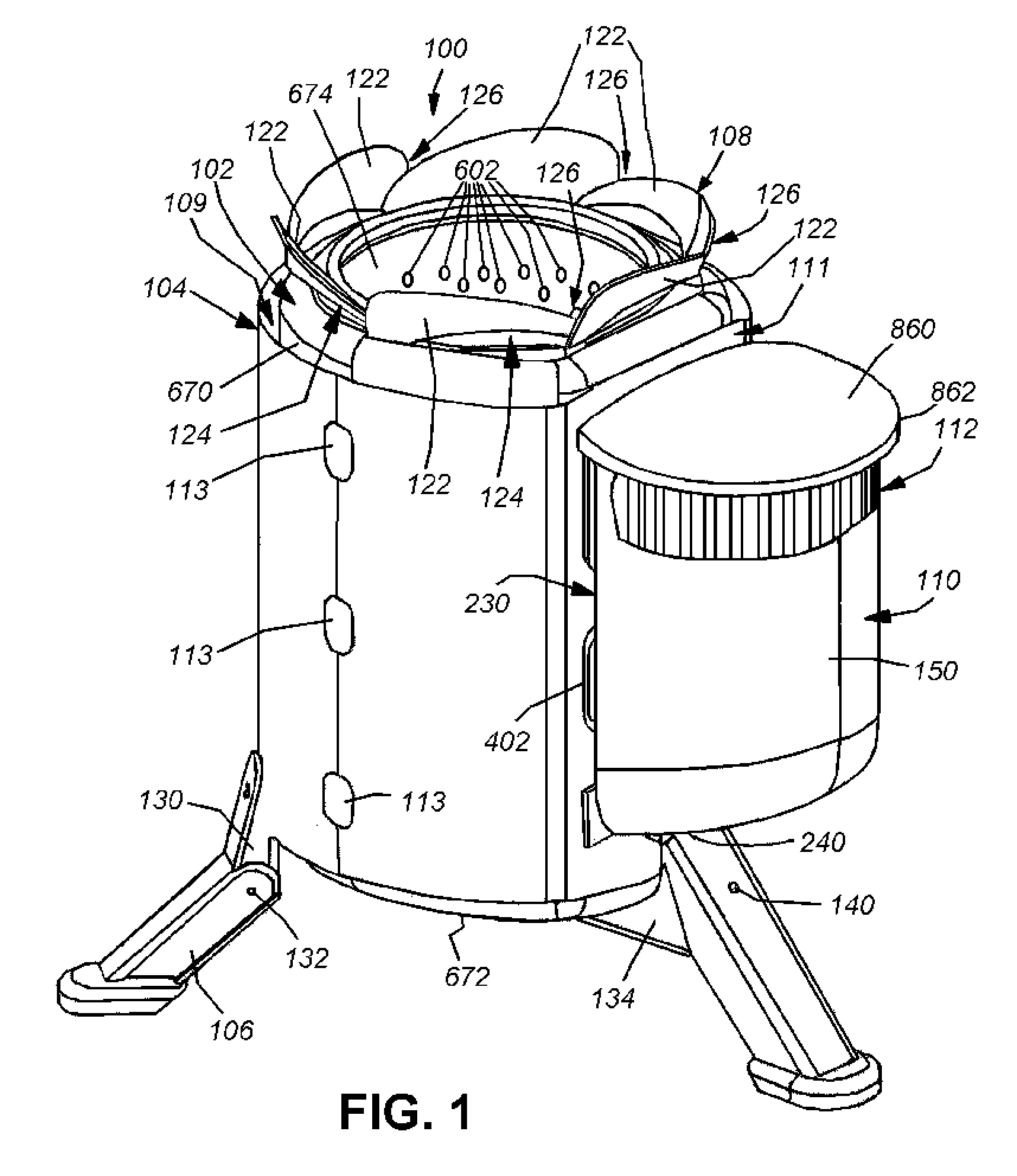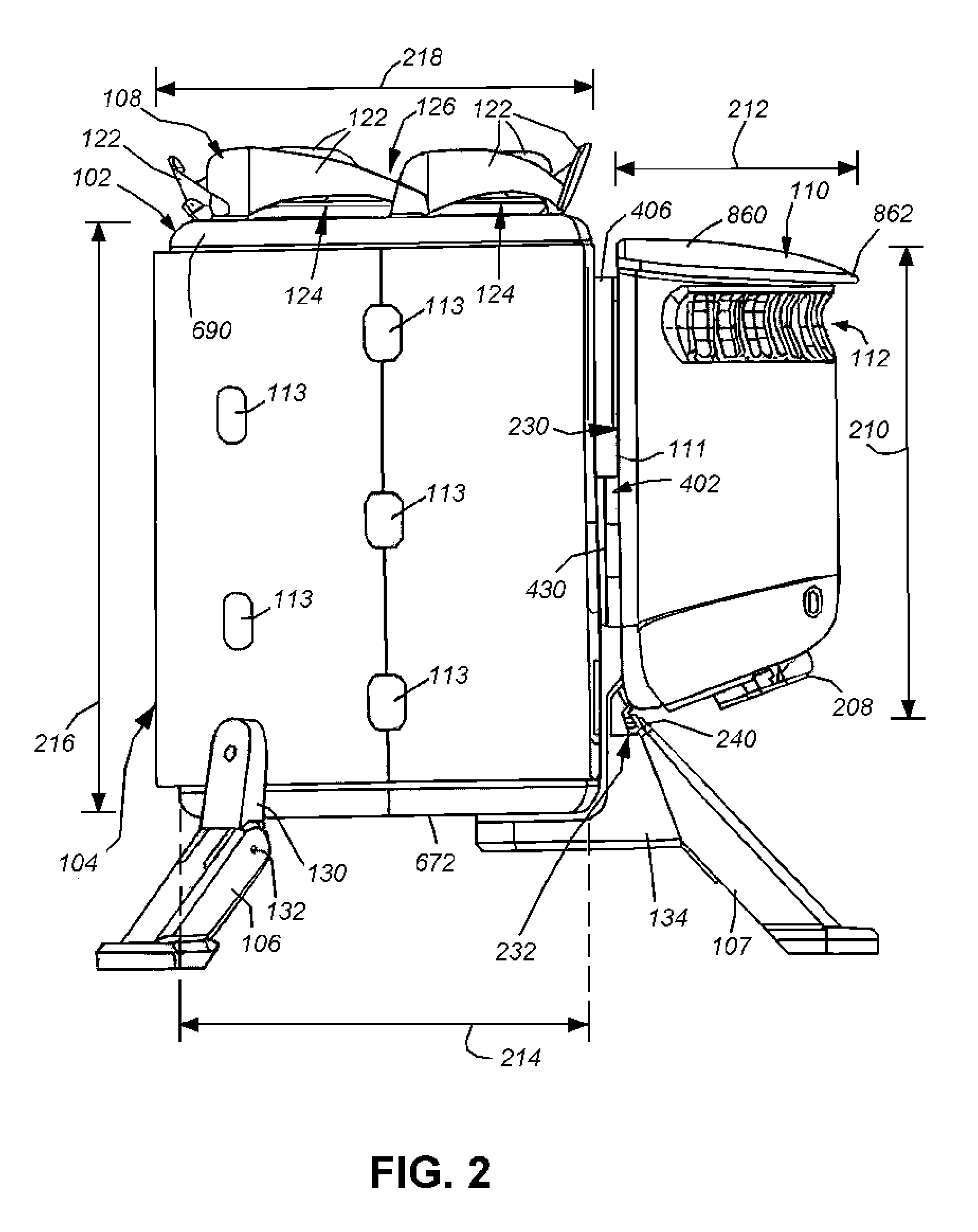Portable combustion device utilizing thermoelectrical generation
a technology of thermoelectric generation and combustion device, which is applied in the direction of domestic stoves or ranges, lighting and heating apparatus, heating types, etc., can solve the problems of inability to obtain a new canister of gas or liquid fuel, difficulty in ensuring the safety of users, so as to achieve efficient overall combustion and reduce the kindling period
- Summary
- Abstract
- Description
- Claims
- Application Information
AI Technical Summary
Benefits of technology
Problems solved by technology
Method used
Image
Examples
Embodiment Construction
[0033]In accordance with the present invention, there is provided a portable combustion device that generates power and heat by efficiently (i.e. cleanly) burning a biomass fuel. It should be clear that, the term “biomass” can be taken broadly to include any fuel, coal, oil, waste products, etc, that will burn more cleanly and efficiently by injection of air during combustion. Likewise, a further advantage of increased efficiency in the burning of fuel is that less fuel is consumed for a given heat output.
[0034]FIGS. 1-3 show various views of the portable combustion device 100 according to an illustrative embodiment of this invention. The depicted portable combustion device 100 is relatively cylindrical in shape and is comprised of an internal combustion or burn chamber 102 and a TEG (thermoelectric generator) housing 110 constructed of a durable polymer or lightweight metal, such as an aluminum casting. The combustion chamber 102 is preferably made of a lightweight, durable metal, ...
PUM
 Login to View More
Login to View More Abstract
Description
Claims
Application Information
 Login to View More
Login to View More - R&D
- Intellectual Property
- Life Sciences
- Materials
- Tech Scout
- Unparalleled Data Quality
- Higher Quality Content
- 60% Fewer Hallucinations
Browse by: Latest US Patents, China's latest patents, Technical Efficacy Thesaurus, Application Domain, Technology Topic, Popular Technical Reports.
© 2025 PatSnap. All rights reserved.Legal|Privacy policy|Modern Slavery Act Transparency Statement|Sitemap|About US| Contact US: help@patsnap.com



